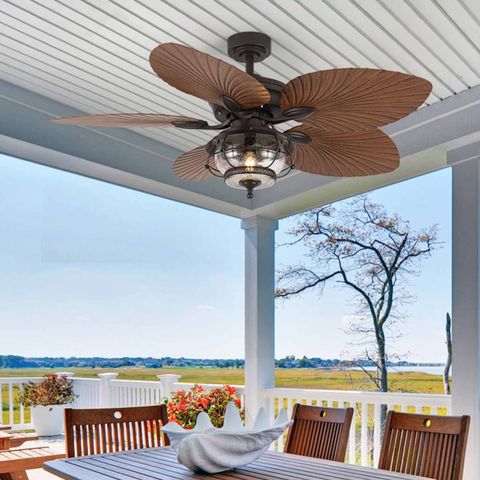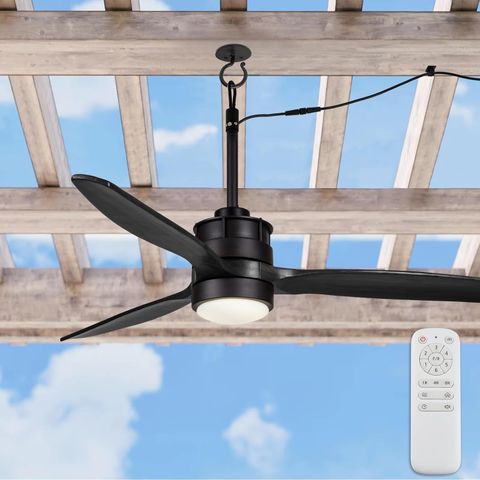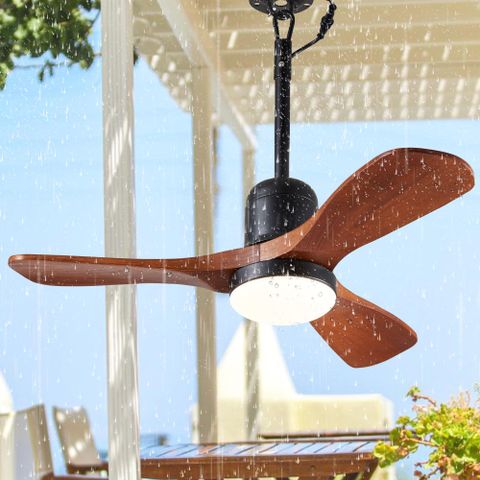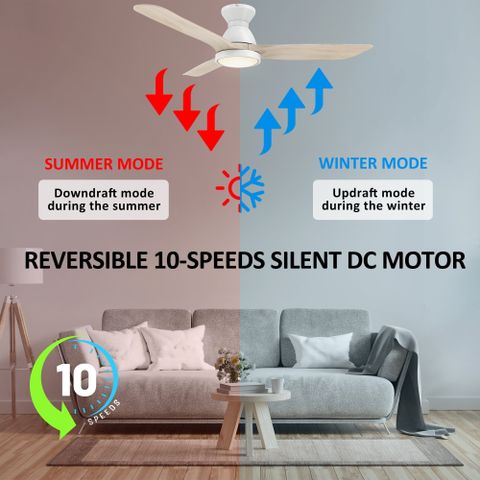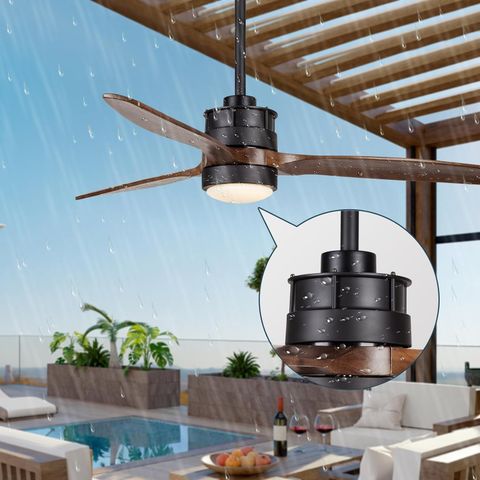Picture this: sweltering humidity, relentless sun, and no relief from the heat. That’s the daily reality for many people living in tropical regions. Finding the right outdoor ceiling fan can transform your patio, deck, or covered porch from a sauna into a comfortable retreat. But with so many options available, how do you know which one will actually stand up to the harsh conditions?
When the temperature climbs and the humidity reaches uncomfortable levels, the last thing you want is a fan that fails when you need it most. Tropical climates present unique challenges for outdoor fan selection – from constant exposure to moisture and UV rays to the need for powerful airflow without excessive noise. The good news? With the right knowledge, choosing the perfect outdoor ceiling fan becomes much simpler. It’s not just about spinning blades and fancy designs. It’s about understanding how materials, construction, and features work together to deliver reliable performance in challenging weather conditions.
Understanding Tropical Climate Challenges
Tropical environments bring their own set of obstacles that can quickly ruin a poorly chosen fan. High humidity levels are perhaps the biggest culprit, as they accelerate corrosion and can damage electrical components. Sun exposure isn’t just about heat – UV rays break down materials faster than you might expect. Additionally, tropical areas often experience sudden storms and strong winds, requiring fans that can handle both gentle breezes and more aggressive weather patterns.
Consider the difference between a fan designed for temperate climates versus one built for tropical conditions. A standard indoor fan might survive a few months of outdoor use before showing signs of wear. But a properly rated outdoor fan can handle years of consistent exposure while maintaining its performance. The key lies in understanding what makes a fan truly suitable for these demanding conditions.
Critical Material Considerations
The foundation of any quality outdoor fan starts with its materials. Aluminum is often the go-to choice for outdoor applications because it resists rust and corrosion better than steel. Look for fans with aluminum blades and motor housings – they’ll handle the humidity much better than cheaper alternatives. Stainless steel components add extra durability, especially in coastal areas where salt air poses additional challenges.
Not all aluminum is created equal though. Some manufacturers use lower-grade materials that may look similar but fail under prolonged exposure. Pay attention to the finish too – powder coating provides superior protection against fading and peeling compared to regular paint. When shopping, ask about material specifications rather than just relying on appearance alone.
Real-world experience shows that fans made with quality materials often cost more upfront but save money over time. They require less maintenance and replacement, making them a smarter long-term investment for anyone living in a humid climate.
Weather Rating and Protection Standards
Every outdoor fan should come with specific weather rating information, typically expressed using IP (Ingress Protection) ratings. An IP65 rating means the fan is dust-tight and protected against water jets from any direction – crucial for tropical environments. Higher ratings like IP67 offer even better protection against temporary immersion in water.
The NEMA (National Electrical Manufacturers Association) ratings also matter significantly. Look for fans rated NEMA 3R or higher for outdoor use. These ratings ensure the fan can withstand rain, sleet, snow, and temperature fluctuations without malfunctioning. Don’t assume that just because something is labeled ‘outdoor’ it meets these standards.
What happens when a fan doesn’t meet these requirements? Moisture can seep into electrical connections, causing short circuits and potentially creating fire hazards. It’s worth noting that many tropical regions experience heavy rainfall and high humidity, so the fan must be able to handle these conditions consistently.
Blade Design and Airflow Efficiency
Tropical climates demand maximum airflow efficiency, especially when dealing with high humidity that makes the air feel heavier. Blade design plays a crucial role in achieving optimal performance. Larger blades generally move more air, but they also require more power to operate efficiently. In tropical areas where electricity costs might be a concern, finding the right balance is essential.
The angle of the blades matters too. Most effective tropical fans have blades angled between 12-15 degrees for maximum air movement. This design allows the fan to pull air upward and create a cooling breeze that moves across the body effectively. Some manufacturers offer variable blade angles that can be adjusted based on seasonal needs.
Consider the blade pitch as well – this refers to the angle of the blade relative to the horizontal plane. Higher pitch angles create more airflow but may produce more noise. In residential settings, a balance between performance and quiet operation is usually preferred. Testing different blade configurations in actual tropical conditions can reveal significant differences in comfort levels.
Motor Quality and Longevity Factors
The heart of any ceiling fan is its motor, and this becomes even more critical in tropical climates where constant operation is common. Look for motors specifically designed for continuous outdoor use. These typically feature sealed bearings and waterproof windings that prevent moisture intrusion.
Servo motors and DC motors often provide better performance and longevity compared to traditional AC motors in demanding conditions. They tend to run cooler and more efficiently, reducing the risk of overheating during extended use. However, they may come at a higher price point.
Maintenance requirements should factor into your decision. Some motors require annual servicing, while others are virtually maintenance-free. If you’re planning to install a fan in a hard-to-reach location, choosing a motor that requires minimal upkeep makes practical sense. The motor’s lifespan directly affects how often you’ll need to replace or repair the entire unit.
Installation and Mounting Considerations
Proper installation is half the battle won when it comes to tropical outdoor fans. The mounting hardware must be compatible with your specific structure and able to handle the weight and wind loads typical in tropical areas. Many manufacturers provide detailed installation instructions and recommend professional installation for certain models.
Roof-mounted fans require special attention to weatherproofing the mounting points. Corrosion-resistant fasteners and sealants are essential for preventing water infiltration. Some installations require additional reinforcement to support the fan’s weight during high wind events.
Don’t overlook the importance of electrical connections either. Outdoor installations need GFCI (Ground Fault Circuit Interrupter) protection to prevent electrical hazards during wet conditions. Proper wire gauges and weatherproof junction boxes ensure safe operation for years to come. Many tropical regions experience frequent thunderstorms, making proper electrical safety measures even more important.
Choosing the right outdoor ceiling fan for tropical climates isn’t just about aesthetics or initial cost. It’s about making informed decisions that account for the unique stresses these environments place on equipment. From material selection to weather ratings, every aspect matters when you’re dealing with constant humidity and potential storms. The investment in a quality outdoor fan pays dividends in comfort, safety, and longevity. Remember, the best fan for your situation might not be the cheapest one. Take time to research specifications, read reviews from people in similar climates, and consider long-term maintenance costs. After all, you want a fan that keeps you cool and comfortable, not one that breaks down during the hottest part of summer. With careful consideration, finding that perfect outdoor fan becomes less about guesswork and more about making smart choices based on proven principles.

